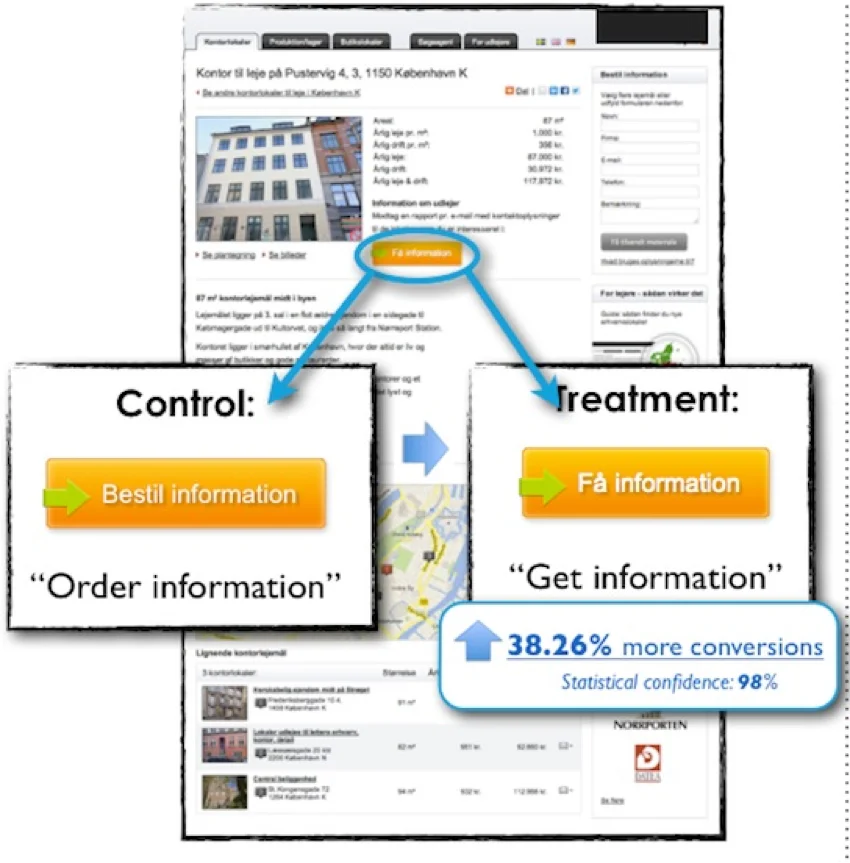Five Steps to Writing a Killer Call-to-Action
As a business owner, you’re constantly striving to stay on the same page with prospects and clients.
But does your message actually have a compelling substance, or are you just telling beautiful stories that keep your readers entertained for a short while?
Lack of a call to action automatically affects that website’s relationship with clients and ultimately, their competitiveness and profit margins.
To consolidate your position on any market, interact with clients the easy way and make them act in a certain manner, you have to upgrade your copy using the right calls to action, designed to convince your readers to do something (besides reading and bouncing off your page).
Maybe you want them to request a quote, download an eBook, give you a call or contact your staff members via email. Either way, to achieve your goal you have to master the art of writing killer, super-effective calls to action.
Here’s a strange fact that may make you spend a little more time working on your CTAs: sometimes, you can boost your conversions by simply changing one of the words comprised by your calls to action. A case study mentioned by Unbounce indicates that a B2B website owner has reported a 38.26% increase in conversions after replacing just one action verb with another. This is an older study, but the results hold true today.

So what does this example actually tell us, aside from the fact that one single word can influence the actions of your prospects in a considerable manner?
This case study reveals that small tweaks can return amazing results, as long as they are focused on ways to add value to your copy. In this particular situation, the term “order” refers to the course of action that the prospect should take, and doesn’t actually highlight the benefit that the user would experience after doing what’s expected of him. On the other hand, the term “get” is more focused on the advantages, rewards, and satisfaction that a potential client will automatically profit from after responding to a certain CTA.
All in all, a combination of value and relevance is the winning formula enabling you to take your CTAs to a whole new level and boost their effectiveness.
So now what? Start by revisiting your old calls-to-action positioned on your landing pages. Replace generic orders like “Buy Now”, “Download Now”, which emphasize the action that you want your readers to take, with personalized copy that stresses out the perks that your audience can actually get from you after following your lead.
For example, instead of just writing “Buy Now”, create a button with a message reading “Add to Cart- Save 50% Today”. The latter option is much more personalized and specific than the first one. Always remember that your readers dislike overly generic messages and want you to talk to them like you’ve known each other for decades. Therefore, don’t hesitate to replace a low-impact, concise message like “Submit”, “Call Us” or “Download” with a more meaningful construction that commands attention and also stimulates your reader to take action by focusing on benefits.
Begin your sentences with verbs and subjects to help people grasp the meaning of your CTA at a first glance. According to an article published by Hubspot, you should include numbers to keep your message straightforward and clear. Avoid fluff that could bore and distract your readers.
The copy that you create for your CTAs is an extremely important element that influences the actions of your readers just as much as other key factors, such as the color, size, and shape of the CTA button.
Under these circumstances, you are probably wondering how you could polish your copy and come up with the most impactful words to seduce the minds of your prospects and get them in your door.
The good news is that you can count on a great variety of templates that have already returned positive results in any given set of circumstances. But before taking a closer look at key formulas that have already been tested, approved and used by skilled content creators, let’s focus on the main aspects that influence the quality and effectiveness of CTAs.
1. Goals
First of all, what kind of actions are you trying to stimulate?
Craft your message based on the objectives that you want to reach. For instance, a download now button is the right choice for lead generation, while a “send me info” is more suitable for business relationship building.
2. A Short String of Action-Oriented Words
Did you know that even the smallest changes in terms of copy can trigger major impact on your conversion rates? From this point of view, it’s always best to choose your words wisely and stick to a formula that has already proven to be effective.
Here’s a strange fact that may make you spend a little more time working on your CTAs: sometimes, you can boost your conversions by simply changing one of the words comprised by your calls to action. A case study mentioned by Unbounce indicates that a B2B website owner has reported a 38.26% increase in conversions after replacing just one action verb with another. This is an older study, but the results hold true today.
3. Original Food for Thought Delivered in an Interesting Package
Create a bond with your visitors by using pronouns such as “me” and “you” and focus on the needs of your potential clients. Use the right visuals to support your message and go for a tasteful mix of contrasting colors to capture your visitors’ attention.
4. Size
Keep your message short and clean. Studies have shown that some of the best calls-to-action are under 150 characters. Think about it this way: a CTA like “Buy Now” will most likely convince you that brevity is not the best card that you could play while trying to seduce your readers. At the same time, you have to keep your CTA short and sweet to help your public respond.
In addition, the size of your CTA buttons is also important. A too-small version won’t command attention, while a supersized one will make you seem desperate.
5. Tone and Flow
Use action-oriented words that imply thought leadership and expertise. However, avoid technical jargon that may confuse or deter your readers. Stress out the benefits of your offer in as few words as possible.
In an article presenting the main ways in which bad copywriting can kill and bury your product, UserTesting reveals just how important it is to speak the language of your readers. Write copy that your visitors can understand and relate to. If possible, avoid industry-specific terms that are difficult to comprehend and humanize your content by using everyday words and adopting a conversational tone.




